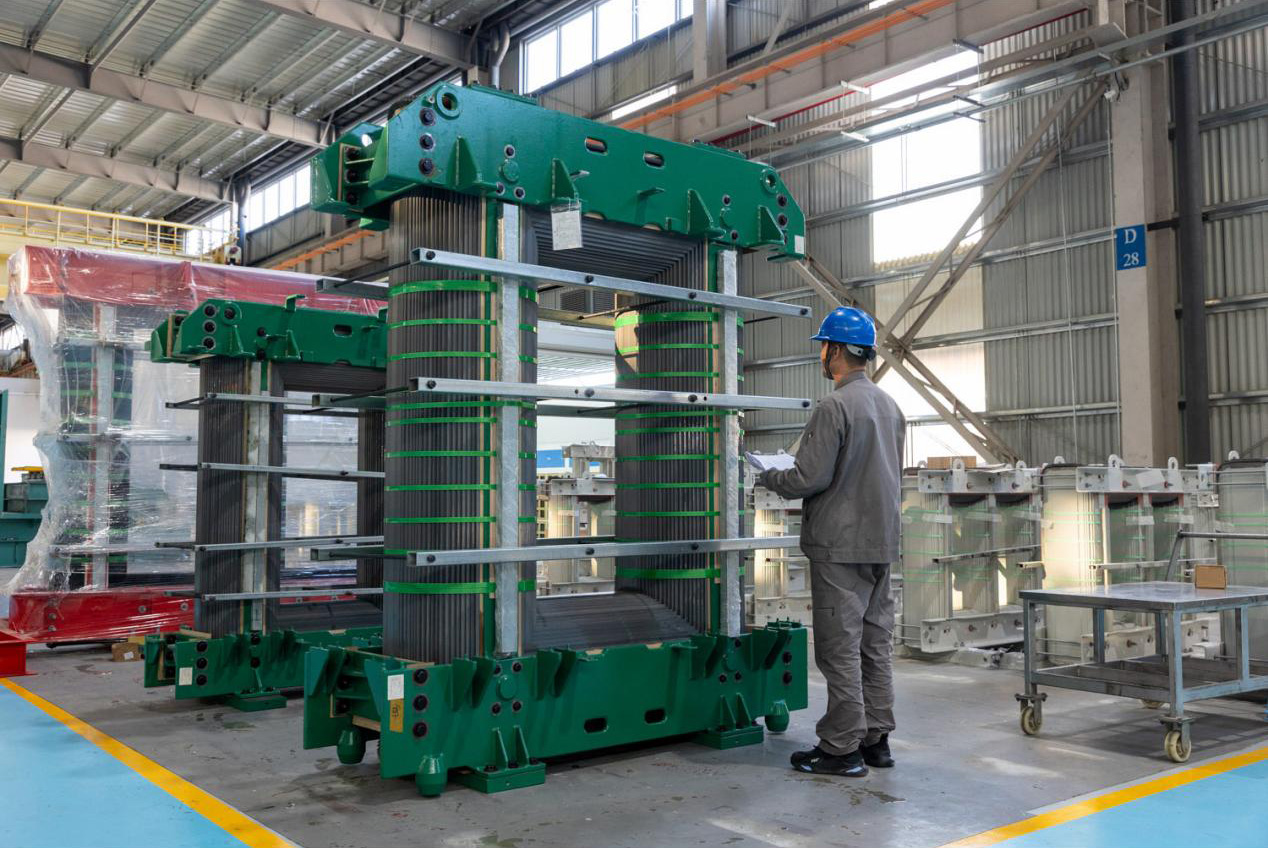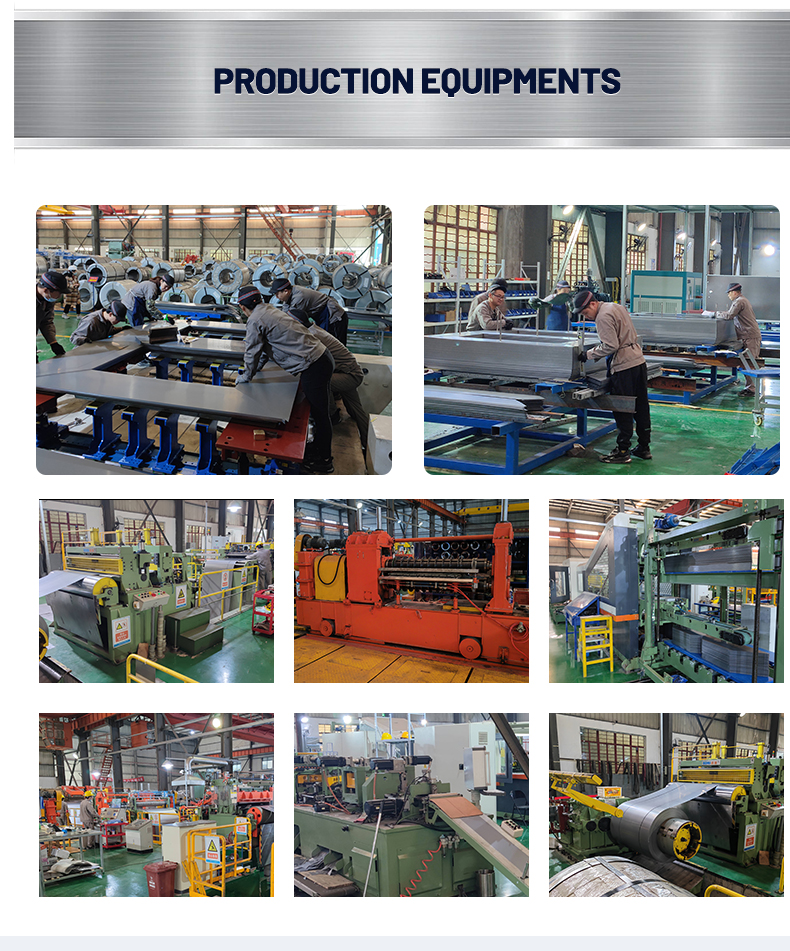

| Availability: | |
|---|---|
| Quantity: | |
In an oil-filled transformer, the core and windings are submerged in transformer oil, which serves multiple purposes:
Cooling: The oil absorbs heat generated by the transformer's operation and transfers it to the outer surfaces of the transformer for dissipation into the surrounding air.
Insulation: The oil provides electrical insulation between the windings and other components within the transformer, as well as between different parts of the windings themselves.
Preservation: The oil helps to protect the internal components of the transformer from moisture and contaminants, thereby extending the life of the equipment.
The core's design and material are crucial because they directly affect the efficiency and performance of the transformer. High-quality materials and careful construction can minimize energy loss and ensure reliable operation over many years.

For authoritative references on this topic, you might consult standards published by organizations such as the International Electrotechnical Commission (IEC) or the Institute of Electrical and Electronics Engineers (IEEE), which provide detailed specifications and guidelines for the design and operation of transformers.

1. Efficiency
Low Losses: The core should be designed to minimize energy losses due to hysteresis and eddy currents. High-quality materials like silicon steel with low iron loss characteristics can significantly reduce these losses.
High Permeability: Silicon steel laminations used in the core have high magnetic permeability, which enhances the magnetic flux density and improves the transformer's efficiency.
2. Reliability
Mechanical Stability: The core must remain stable under all operating conditions, including thermal expansion and contraction caused by temperature changes during operation.
Durability: Materials and construction techniques should ensure that the core can withstand the stresses of repeated energization and de-energization cycles without degradation.
3. Thermal Performance
Effective Cooling: The design of the core and its interaction with the surrounding oil must facilitate effective heat transfer. Proper cooling ensures that the core operates within safe temperature limits, thus extending the life of the transformer.
Temperature Endurance: The core materials should maintain their properties over a wide range of temperatures, ensuring consistent performance even under varying load conditions.
4. Electrical Insulation
Dielectric Strength: The insulation system, which includes the transformer oil, must provide adequate dielectric strength to prevent electrical breakdown between the windings and other components.
Moisture Resistance: The core and its insulation should resist moisture absorption, which could otherwise lead to corrosion and decreased insulation resistance.
5. Environmental Impact
Non-Toxicity: Modern transformer oils are often biodegradable or non-toxic to minimize environmental impact in case of leaks.
Recyclability: Design considerations for easy disassembly and recycling of the core material contribute to the transformer’s environmental footprint.
6. Economic Factors
Cost-Effectiveness: Balancing the cost of materials, manufacturing, and maintenance against the expected performance and lifespan of the transformer is important for economic viability.
Maintenance Requirements: A well-designed core reduces the need for frequent maintenance, leading to lower operational costs over time.
7. Standards Compliance
Adherence to international standards (e.g., IEC, IEEE) ensures that the core meets specific performance criteria and safety requirements, facilitating interoperability and trust in the product.



Shanghai JISCO Electrical Technology Co., Ltd. is located in Shanghai Baoshan, with more than 200 employees and the factory covers an area of 33,000 m², including a 12,000 m² digital factory. Shanghai JISCO mainly engaged in the sales of oriented, non-oriented electrical steels, and the processing and production of transformer core for more than 15 years.
Q1: What is an oil-filled power transformer core?
A1: The core is the magnetic heart of a transformer, typically made from stacked laminations of silicon steel designed to support the magnetic field required for transferring electrical energy between circuits. In oil-filled transformers, the core is immersed in insulating oil that provides cooling and insulation.
Q2: Why is the core important in a transformer?
A2: The core plays a critical role by providing a path for magnetic flux, which links the primary and secondary windings. Its efficiency directly impacts the transformer's performance, losses, and overall size.
Materials and Construction
Q3: What materials are used in constructing the core?
A3: High-permeability, low-loss silicon steel is commonly used due to its excellent magnetic properties. Laminations are insulated from each other to reduce eddy current losses.
Q4: How does lamination help improve efficiency?
A4: Laminating the core reduces eddy currents, which are circulating currents within the core that generate heat and cause energy loss. Thinner laminations further decrease these losses.
Performance and Maintenance
Q5: How does the core affect transformer efficiency?
A5: A well-designed core minimizes hysteresis and eddy current losses, leading to higher efficiency. Material quality and construction techniques significantly influence this aspect.
Q6: What maintenance does the core require?
A6: Direct maintenance of the core is minimal; however, ensuring proper operation of the cooling system (transformer oil) and monitoring for any signs of moisture or contamination is crucial.
In an oil-filled transformer, the core and windings are submerged in transformer oil, which serves multiple purposes:
Cooling: The oil absorbs heat generated by the transformer's operation and transfers it to the outer surfaces of the transformer for dissipation into the surrounding air.
Insulation: The oil provides electrical insulation between the windings and other components within the transformer, as well as between different parts of the windings themselves.
Preservation: The oil helps to protect the internal components of the transformer from moisture and contaminants, thereby extending the life of the equipment.
The core's design and material are crucial because they directly affect the efficiency and performance of the transformer. High-quality materials and careful construction can minimize energy loss and ensure reliable operation over many years.

For authoritative references on this topic, you might consult standards published by organizations such as the International Electrotechnical Commission (IEC) or the Institute of Electrical and Electronics Engineers (IEEE), which provide detailed specifications and guidelines for the design and operation of transformers.

1. Efficiency
Low Losses: The core should be designed to minimize energy losses due to hysteresis and eddy currents. High-quality materials like silicon steel with low iron loss characteristics can significantly reduce these losses.
High Permeability: Silicon steel laminations used in the core have high magnetic permeability, which enhances the magnetic flux density and improves the transformer's efficiency.
2. Reliability
Mechanical Stability: The core must remain stable under all operating conditions, including thermal expansion and contraction caused by temperature changes during operation.
Durability: Materials and construction techniques should ensure that the core can withstand the stresses of repeated energization and de-energization cycles without degradation.
3. Thermal Performance
Effective Cooling: The design of the core and its interaction with the surrounding oil must facilitate effective heat transfer. Proper cooling ensures that the core operates within safe temperature limits, thus extending the life of the transformer.
Temperature Endurance: The core materials should maintain their properties over a wide range of temperatures, ensuring consistent performance even under varying load conditions.
4. Electrical Insulation
Dielectric Strength: The insulation system, which includes the transformer oil, must provide adequate dielectric strength to prevent electrical breakdown between the windings and other components.
Moisture Resistance: The core and its insulation should resist moisture absorption, which could otherwise lead to corrosion and decreased insulation resistance.
5. Environmental Impact
Non-Toxicity: Modern transformer oils are often biodegradable or non-toxic to minimize environmental impact in case of leaks.
Recyclability: Design considerations for easy disassembly and recycling of the core material contribute to the transformer’s environmental footprint.
6. Economic Factors
Cost-Effectiveness: Balancing the cost of materials, manufacturing, and maintenance against the expected performance and lifespan of the transformer is important for economic viability.
Maintenance Requirements: A well-designed core reduces the need for frequent maintenance, leading to lower operational costs over time.
7. Standards Compliance
Adherence to international standards (e.g., IEC, IEEE) ensures that the core meets specific performance criteria and safety requirements, facilitating interoperability and trust in the product.



Shanghai JISCO Electrical Technology Co., Ltd. is located in Shanghai Baoshan, with more than 200 employees and the factory covers an area of 33,000 m², including a 12,000 m² digital factory. Shanghai JISCO mainly engaged in the sales of oriented, non-oriented electrical steels, and the processing and production of transformer core for more than 15 years.
Q1: What is an oil-filled power transformer core?
A1: The core is the magnetic heart of a transformer, typically made from stacked laminations of silicon steel designed to support the magnetic field required for transferring electrical energy between circuits. In oil-filled transformers, the core is immersed in insulating oil that provides cooling and insulation.
Q2: Why is the core important in a transformer?
A2: The core plays a critical role by providing a path for magnetic flux, which links the primary and secondary windings. Its efficiency directly impacts the transformer's performance, losses, and overall size.
Materials and Construction
Q3: What materials are used in constructing the core?
A3: High-permeability, low-loss silicon steel is commonly used due to its excellent magnetic properties. Laminations are insulated from each other to reduce eddy current losses.
Q4: How does lamination help improve efficiency?
A4: Laminating the core reduces eddy currents, which are circulating currents within the core that generate heat and cause energy loss. Thinner laminations further decrease these losses.
Performance and Maintenance
Q5: How does the core affect transformer efficiency?
A5: A well-designed core minimizes hysteresis and eddy current losses, leading to higher efficiency. Material quality and construction techniques significantly influence this aspect.
Q6: What maintenance does the core require?
A6: Direct maintenance of the core is minimal; however, ensuring proper operation of the cooling system (transformer oil) and monitoring for any signs of moisture or contamination is crucial.